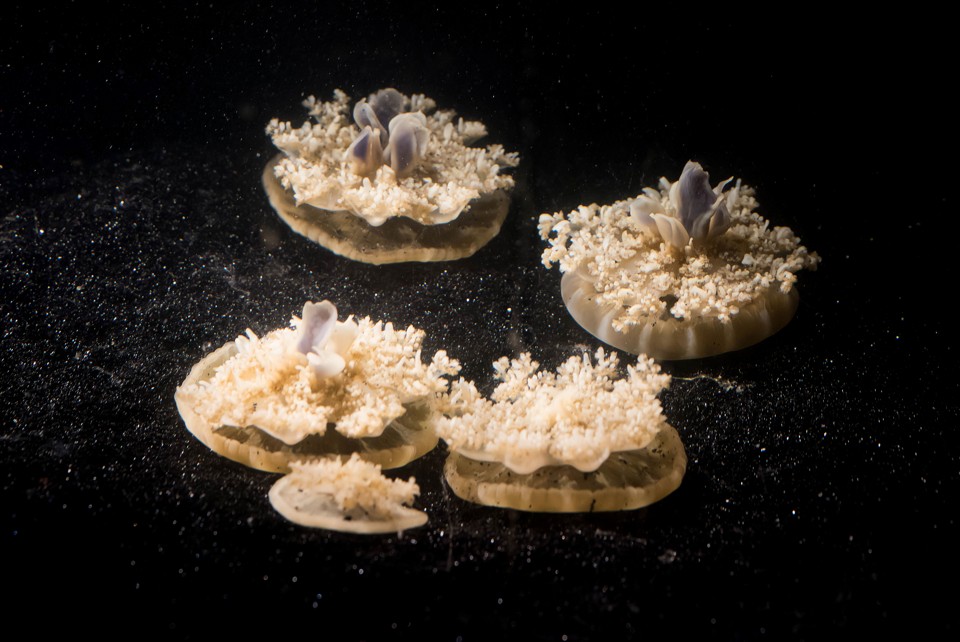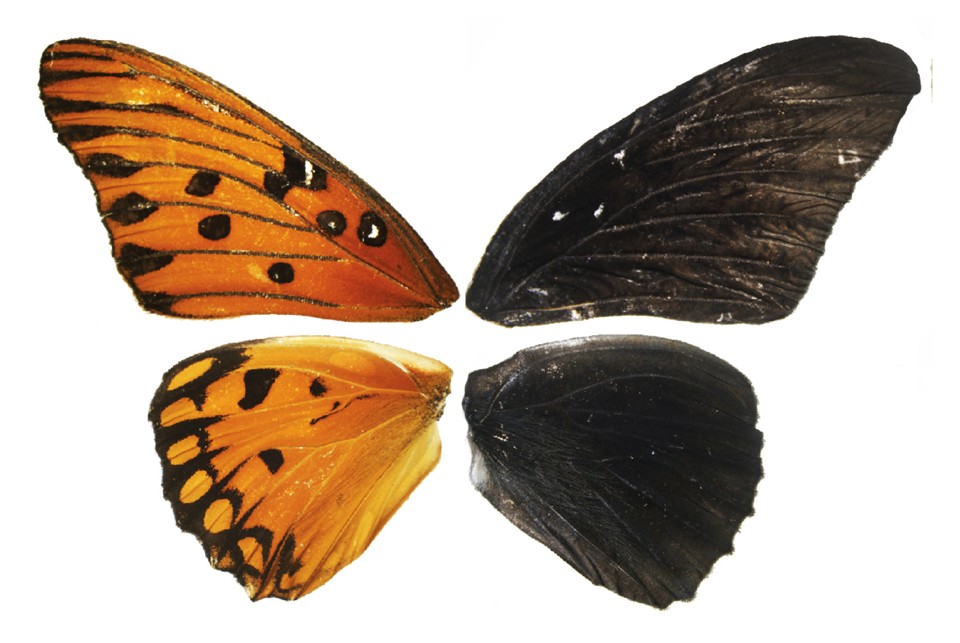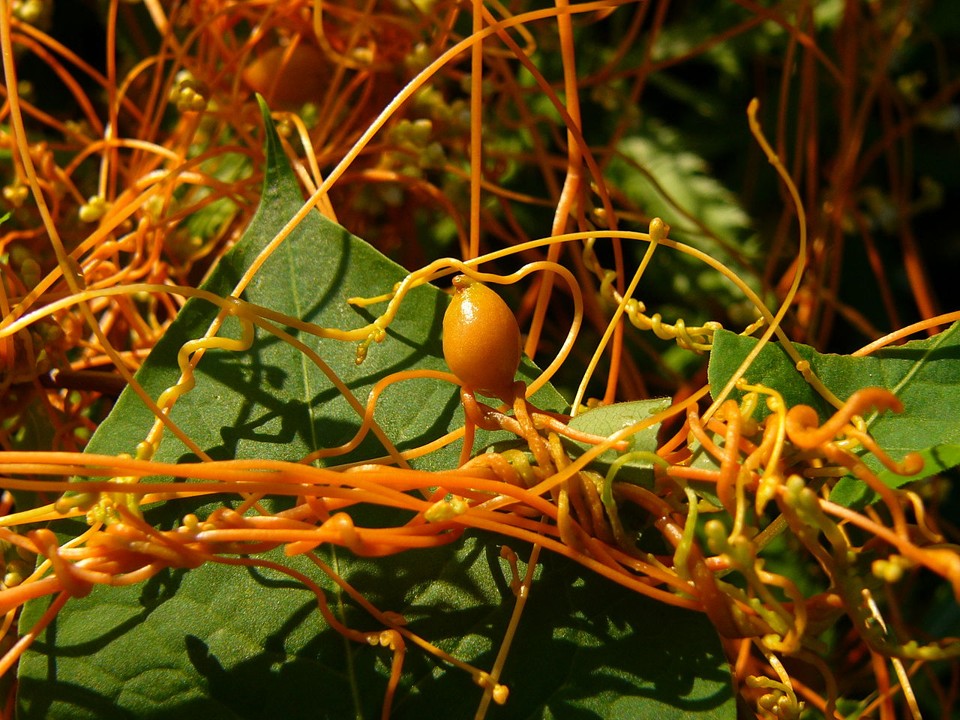The Ed's Up #199

How to Raise the Rarest Kiwi
"When I first see the kiwi chick, I briefly wonder if I’m actually looking at a real animal. It’s a grapefruit-sized sphere of fluff with an adorably short version of an adult’s long beak. When it sits still in its dark, red-lit enclosure, it looks indistinguishable from some of the plush toys that fill New Zealand’s gift shops. Unlike the chicks of most birds, the kiwi’s surprisingly mobile and self-sufficient, even though it hatched just six days ago. It’s too early to tell if it’s male or female, but it already has a name: Kami, after a Maori word that means “force of nature.” And it will soon have company. In the room next door, 22 more kiwi eggs are incubating in an artificial chamber." (Image: West Coast Wildlife Center)
Infants Can Learn the Value of Perseverance by Watching Adults
"There exists a seemingly infinite stream of self-help articles that advise parents on how to raise kids with grit—children who persevere in the face of challenges. The offered wisdom ranges from the generically obvious (Praise the process! Use positive words!) to the bizarrely specific (Create an obstacle course!). But perhaps the simplest way of instilling persistence in your kids is to persist yourself—and let them see you doing it. According to a new study by Julia Leonard, Yuna Lee, and Laura Schulz at the Massachusetts Institute of Technology, even 1-year-old infants can draw lessons from such unspoken, undirected demos. When they see adults persisting at a challenging task, they themselves try harder when faced with an unrelated problem. As the team writes, “Showing children that hard work works might encourage them to work hard too.”" (Image: Michael Dalder)

Even Jellyfish Sleep
"When Ravi Nath asks people if jellyfish sleep, he finds that everyone thinks they know the answer. Roughly half say yes, and half say no. Some scientists assert that only mammals and birds could be said to truly sleep. Other people think that even plants have something akin to sleep. “Every person we’ve asked has an opinion,” Nath says. “Even a 10-year-old kid has a response.” Nath has an answer, too. Along with his friends and fellow California Institute of Technology students Claire Bedbrook and Michael Abrams, he put a jellyfish called Cassiopea through a gauntlet of clever experiments, which confirmed that they do indeed enter a sleeplike state. Every night, they become less active and less responsive. They can be easily roused from this state, but if they’re deprived of their slow periods for too long, they become even more inactive and unresponsive the next day—as if they were reeling from an all-nighter. And if the trio are right, their discovery has big implications for understanding both how sleep evolved—and why." (Image: Peter Holderness)

Every One Of These Endangered Parrots Will Have Its Genome Sequenced
"Almost three decades later, the kakapo—once thought extinct—is one of the most thoroughly studied animals on the planet. Every single one of the last 153 kakapos on the planet is known to researchers. Every one carries a radio transmitter, so scientists know its position, as well as its movements and sex life. And soon, a team led by Andrew Digby from the Department of Conservation and Bruce Robertson from the University of Otago will sequence the genomes of all of these birds. By the end of this year, the kakapo will become the second species on Earth for which we have a complete genetic record—the first being the Spix’s macaw, another critically endangered parrot.* Forget hipsters and Silicon Valley entrepreneurs: The exemplar of the quantified-self movement is a green, bumbling, oblivion-defying parrot." (Image: Andrew Digby)

Scientists Can Now Repaint Butterfly Wings
"When the butterfly emerged from its pupa, Robert Reed was stunned. It was a Gulf fritillary—a bright-orange species with a few tigerlike stripes. But this butterfly had no trace of orange anywhere. It was entirely black and silver. “It was the most heavy-metal butterfly I’ve ever seen,” Reed says. “It was amazing to see that thing crawl out of the pupa.” Reed’s team at Cornell University had created the metal butterfly by deleting just one of its genes, using the revolutionary gene-editing technique known as CRISPR. And by performing the same feat across several butterfly species, the team showed that this one gene, known as optix, controls all kinds of butterfly patterns. Red becomes black. Matte becomes shiny." (Image: Robert Reed)

How Bacteria Could Protect Tumors From Anticancer Drugs
"Every person is a seething colony of microbes—a collection of tens of trillions of bacteria and other microscopic organisms that live in and on our bodies. And a team of researchers, led by Ravid Straussman from the Weizmann Institute of Science and Todd Golub from Harvard Medical School, have shown that some of these bacteria can also shield tumors from anticancer drugs." (Image: Leore Geller)

The Parasite That Wires Plants Together
"From one host, dodder vines can reach many more. In a still photo, a dodder infestation looks like someone has thrown spaghetti over a field or forest. But if you speed up the vines’ movements with a time-lapse camera, they resemble a mass of writhing serpents, thrashing about in their quest for more nutrients. By the time it’s finished, a single dodder vine can connect dozens, perhaps hundreds, of hosts. “In our lab, we could connect at least 100 soybean plants with a dodder seedling,” says Jianqiang Wu from the Chinese Academy of Sciences. And that, unexpectedly, has its upsides. Wu’s team has now found that dodder inadvertently wires plants together, allowing them to trade chemical messages that warn one another of attacks by insects." (Image: Silvae) More good reads
- "We have to get actively involved in helping the corals come back." Researchers want to breed corals in labs.
- Primate wield/are tools. Tool-wielding monkeys push local shellfish to edge of extinction.
- The Environmental Protection Agency is now mainly the Environmental Protection Agency Director’s Protection Agency.
- My incredible colleague Vann Newkirk II on the American media’s failure in covering race.
- Ta-Nehisi Coates explains why Trump is a white supremacist, in one minute
- We’re entering the golden age of animal tracking
- Like me, these frogs change color to avoid confusion during orgies
- Nuclear fallout shows that sharks live much longer than thought
- Heartwarming story: Once teased for her love of bugs, an 8-year-old co-authors a scientific paper
- "It’s a photo I wish didn’t exist but now that it does I want everyone to see it."
- Football Fans Were Going To Get Free DNA Tests — Until Health Officials Stepped In
You can also follow me on Twitter or find my writing at The Atlantic. My New York Times-bestselling book, I Contain Multitudes, is out now. If someone has forwarded this email to you, you can sign up yourself.
And that's it. Thanks for reading.
- Ed